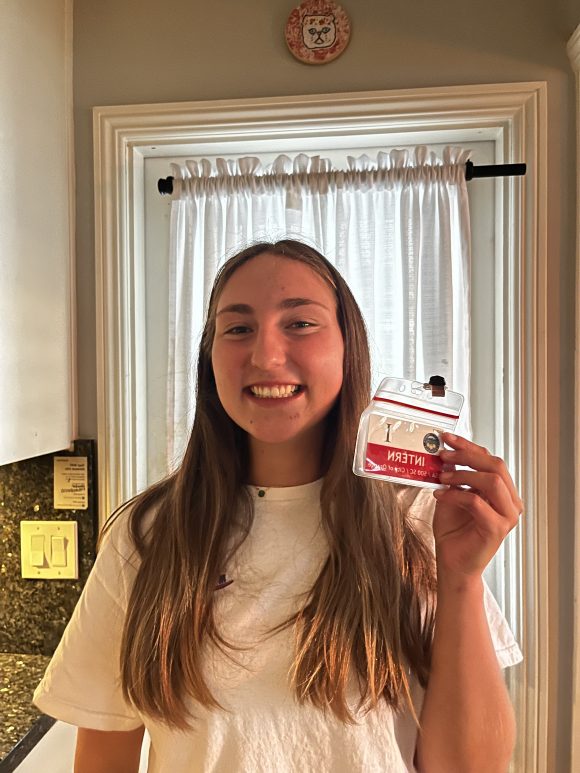Public Speaking in the Real World: Expanding Past a Course Requirement Emily Kinney's internship experience at the Orange County Social Services Agency
June 12, 2024
It is not often that one thinks of their freshman year courses as having a direct relevance to the workplace. For me, I never would have connected living in the dorms and taking public speaking in a diverse society with professor Sarah Downey to the skills that I now get to put to use working as the communications and governmental relations (CGR) intern at the Social Services Agency of Orange County. However, as I come to the end of my time with the county and CGR, I am so thankful for this class and the opportunities I had to hone my skills in conveying oral messages to a specific audience.
My name is Emily Kinney, and I am a junior Communication Studies and Political Science double major with a minor in Business Administration here at Chapman. In my current role, my day-to-day responsibilities range from crafting media kits to creating Canva flyers, to drafting resolutions for the Board of Supervisors, and, as previously mentioned, writing talking points for various events. It is this final responsibility that I want to highlight. Here in the School of Communication, we so often take for granted our comfort with crafting a message and sharing it with others. While things like public speaking are taught to us from our first days at Chapman, this is not the case for everyone.
Recently, I had the opportunity to assist my team in creating a speech shared by one of our agency directors. While going through preliminary drafts, it became clear to me that wiring a speech for someone else is much more difficult than creating one for yourself. You have to take into account their threshold for public speaking, their ability to convey a sentiment they did not create, and most importantly, the audience they’re speaking to and their relationship with them. Going through the process of watching someone else deliver written remarks that they did not draft made me infinitely thankful for my public speaking experiences here at the SOC, as students here are able to learn how to take these things in stride, while other people might not have been given that exposure to public speaking.

Emily with her intern badge
When creating a speech, we’re taught that having an outline that is easily followed by audiences is key. This is also true when creating a speech for someone else to read; if they are unsure of what they are saying or if the flow feels confusing, their oration is not going to be as strong as it could be. This is one key takeaway from COM 102 that I was thankful I understood going into this project. The second tip I utilized from the class was knowing how to utilize body language properly. We are trained to move around the classroom or presentation space and act naturally while commanding the room; hand movements, pitch changes, and eye contact are all key elements of this. These things might not come as easily to people who have not had the opportunity to have formal training in public speaking, and I learned through this process of creating a speech that SOC students should not take for granted their comfortability and sense of ease in front of a large audience. Finally, speeches are all about delivering the most amount of information in the most concise and interesting way possible. Through the activity of drafting multiple iterations of a speech with my bosses, I was able to fully grasp just how important understanding your audience is. Giving a speech to a group of concerned citizens is much different than presenting at a board meeting, so knowing what is appropriate where and the proper amount of information to share was another huge takeaway from my internship. Though these concepts were first introduced to me in my freshman year public speaking course, it was very rewarding to see them retain relevance and be able to be applied in a professional setting. Chapman’s School of Communication is setting us up for success, whether you know it or not!

